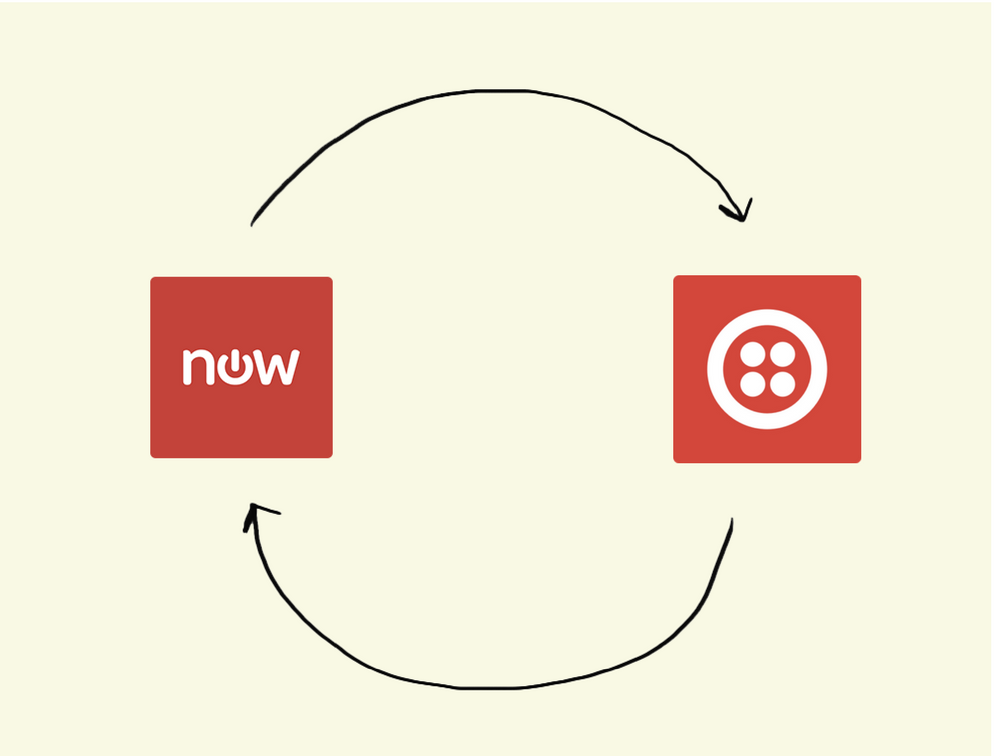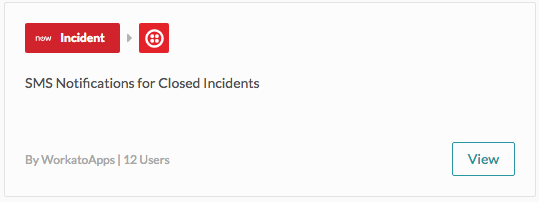This is part of our series with ServiceNow. In this series, we’re bringing you the most popular automation workflows using ServiceNow Express. We’ll cover different integrations to boost your productivity and save you hours of manual work. Using ServiceNow Enterprise? Check out our enterprise integrations.
Most people associate customer service with automated phone menus, long wait times, and bad hold music. But customer service doesn’t have to be unpleasant for the customer or for the agent. Allowing people to text their issues to Customer Service can help make the experience better for everyone – it makes your support team feel accessible, friendly, and convenient. However, good customer service can only be given via text if the Customer Service team is set up with the right tools to do their job well. It’s not practical to expect agents to leave their customer service app and answer texts from a standalone phone as it ruins their workflow, makes tracking difficult, and will inevitably lead to losing track of some customer’s requests.
Integration can save time and frustration by making it easy for support reps to handle requests for support via text and also makes it simple for a customer to log a problem and follow up on it directly from their cell phone. If you use ServiceNow, here are two recipes for integrating ServiceNow Express with Twilio for fantastic support via text.
Seamlessly Create ServiceNow Incidents from Text Messages
Asking for support shouldn’t be difficult, and allowing customers to submit requests via text message can make getting help a lot easier. But with multiple support channels, you need to make sure all requests enter your pipeline efficiently. Our first recipe creates a new ServiceNow Incident when you receive a new inbound text message via Twilio. With this recipe, you can easily log customer service requests that come in via text message.
Not only do you provide customers with another method to contact you when there’s a problem, but you also ensure that a problem’s details seamlessly transfer to ServiceNow.
Similarly, you need to make sure that issue progress is communicated to the customer. Our second recipe sends a text message notification whenever a ServiceNow incident is marked as closed, eliminating the need to manually follow-up with whomever submitted the incident initially.
Integrated, Text-Based Customer Service In Action
Let’s apply these recipes to a business scenario. Imagine a customer who encounters an issue with your company’s product. Looking on the company’s website, the customer sees that she can text her complaint, which she decides to do instead of publicly sharing her issue via Social Media. When she sends the text, Recipe 1 automatically creates a ServiceNow incident logging the issue, so that the customer service team can immediately see the problem and begin solving it. After the CS team resolves the issue and marks the incident as “closed,” Recipe 2 sends a text to the customer, informing her that her issue has been resolved.
These recipes are also useful internally. Let’s imagine that an employee encounters an internal issue that requires a ServiceNow incident. Instead of either manually creating an incident herself or asking a colleague to create one, the employee can simply send an SMS message, and Recipe 1 will create an incident automatically. And she doesn’t need to manually follow up on the status of the incident; once it’s resolved, Recipe 2 will text her and let her know.
It’s often more convenient for someone to text about an issue than call or even email, but you need to make sure all text messages progress through your issue pipeline correctly. Integrating ServiceNow and Twilio streamlines this process, so no request for support goes unanswered.
Ready to simplify your customer service issue tracking and resolution? Check out our comprehensive ServiceNow integrations.


